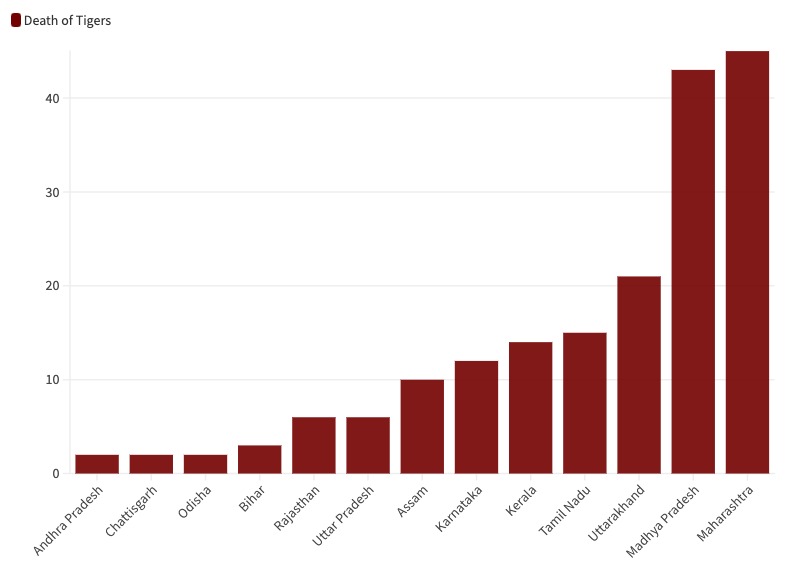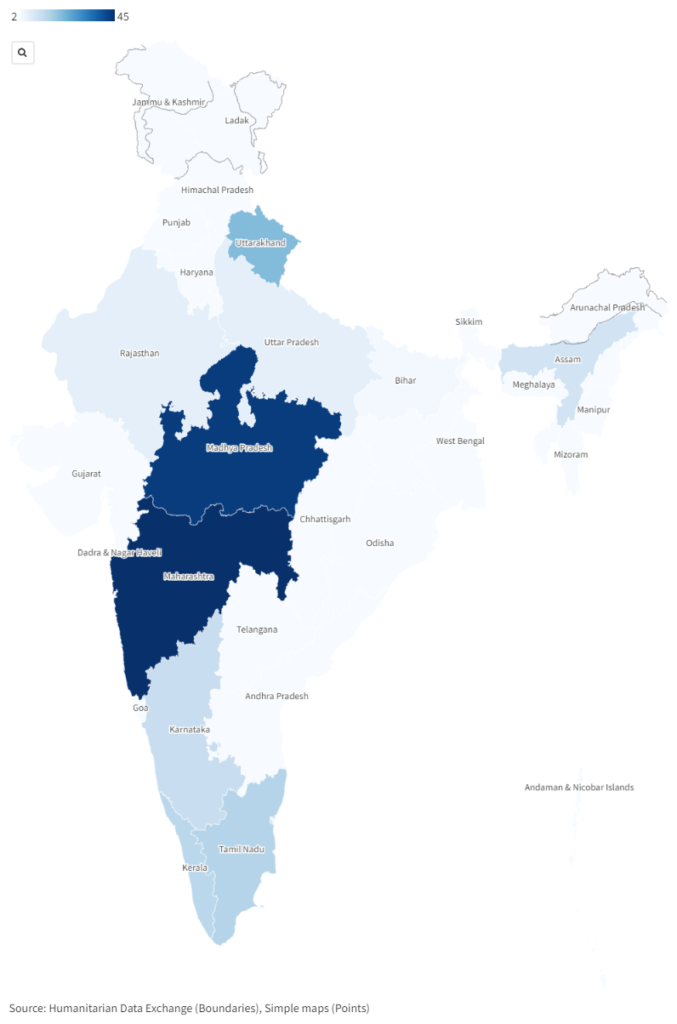Written By Alex A Adhikari
In 2023, India recorded 181 tiger deaths, with Maharashtra, Madhya Pradesh, and Uttarakhand reporting the highest numbers. Despite efforts under Project Tiger, mortality rates have doubled in four years, highlighting the urgency of habitat conservation and addressing human-wildlife conflicts.

The year 2023 recorded 181 deaths of Tigers (December 2023) across the whole Indian subcontinent. Out of the total tiger deaths, Maharashtra (45) recorded the highest, followed by Madhya Pradesh (43) and Uttarakhand (21). India accounts for more than 70% of the Global Tiger Population with more than 3000+ Tigers walking in the Indian Sub-continent.

The mortality data was released by the National Tiger Conservation Authority (NTCA) which is constituted under section 38 L (1) of the Wildlife Protection Act, 1972 monitored by the Ministry of Environment and Forests. The National Tiger Conservation Authority is a part of the Project Tiger which was launched in the year 1972 under the Wildlife Protection Act.
Source: ‘NCTA/X.com’
The objective of the project was the conservation of the Tiger species and their natural habitat. Last year during the summer, Project Tiger was merged with Project Elephant. At present, under Project Tiger, 53 Tiger Reserves are there in India which are managed by the Forest Department of the respective States.

Although the population of Tiger has seen huge growth since the Project Tiger initiative was launched, the deaths of Tigers annually have also increased. In 2019, the total death tally of Tigers was recorded at 96 and after 4 years, the number has doubled. Not only the mortality of Tigers is the problem but also their natural habitats which collide with human settlements including agricultural lands, livestock, private properties, and human lives.
Out of 181 deaths of tigers, 54 were females, 58 were males and 69 were unknown. This tells us how the data released by the NTCA lacks in the demographic information of the Tigers.

Even half of the total deaths were reported outside the Tiger Reserves which questions the Reserves’ surveillance over the Tiger movements and also the concerning problem of limitation of Tigers Natural habitat and thereby collision with human settlements.




















+ There are no comments
Add yours